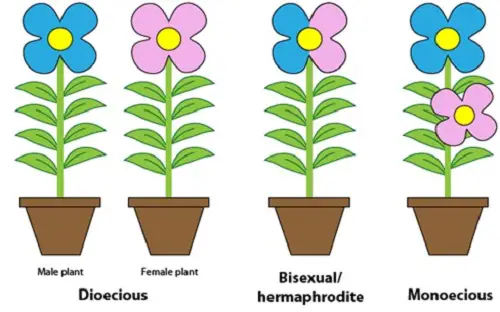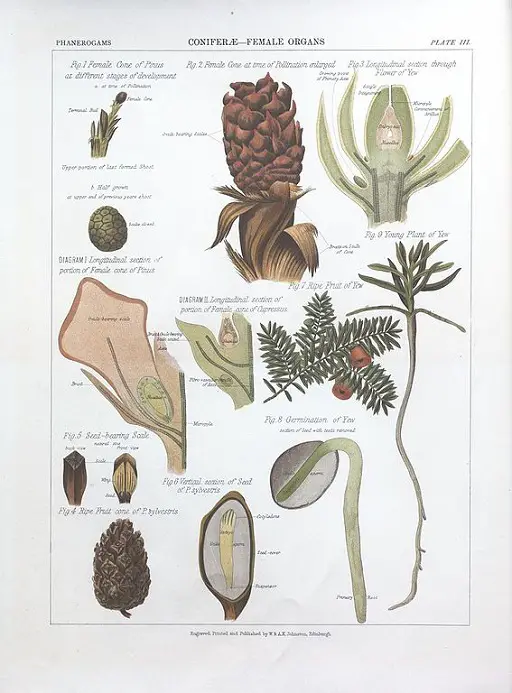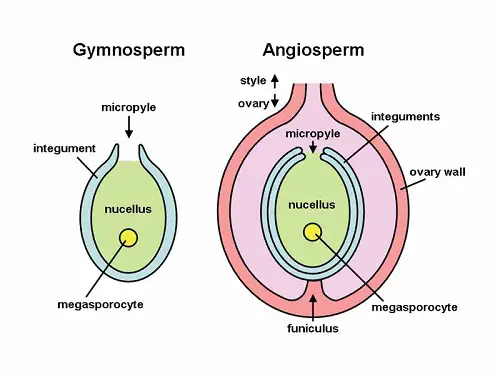
Unisexual vs Bisexual flowers
Introduction
Sexual reproduction forms a mode of replication where two parents, one male and the other female, are involved in producing a new individual. The flower itself forms the reproductive part of a plant and can be unisexual or bisexual depending on the type of flower. While some plants reproduce asexually, most flowering plants reproduce sexually. Complete flowers consist of four main parts, namely the petals, sepals, stamen and pistil or carpel. The stamen forms the male reproductive part and consists of two parts: the anther and the filament. The anther forms a sac which produces and stores pollen while the filament supports the anther. The pistil on the other hand, forms the reproductive part of the flower and comprises of three parts – a stigma, style and ovary . A flower may contain either a stamen or pistil or both. based on this, the flower can be classified as either being unisexual or bisexual in which a bisexual flower consists of all four parts.
What are unisexual and bisexual flowers?
Unisexual flowers are also known as incomplete flowers and contain either the male or female reproductive organs within the flower while bisexual flowers are defined as complete flowers wherein the male and female reproductive organs are contained . These are commonly referred to as the androecium (male flowers) and gynoecium (female flowers) which is contained all in one flower. These bisexual flowers are often referred to as being hermaphrodites or androgynous flowers as they contain both the stamen and pistils within the same flower.
Structure of unisexual and bisexual flowers
Pistils form the female reproductive organs of plants and flowers having only pistils are said to be pistillate or female while a flower having stamens is said to be staminate or male as these form the male reproductive organs . A mature pistil contains one or more ovules, style, and a stigma while stamens contain anthers, which are held together by filaments. Unisexual flowers contain both the male flowers which hold the stamen and the female flowers which hold the pistils. In many of these unisexual flowers, the non-functioning organs of the other sex may still be present but in a reduced form and these flowers are said to be either functionally male or female . In addition, unisexual flowers consist of two types, namely monoecious and dioecious. Plants that contain both male and female flowers are referred to as being monoecious while plants that contain either male or female flowers are referred to as being dioecious.
Bisexual flowers on the other hand contain a single flower with both the male pollen producing parts and female seed-producing parts, also known as the anthers and ovary. Common examples of monoecious plants include corn while asparagus, dates and spinach are all common examples of dioecious plants.
Types of unisexual and bisexual flowers
Unisexual plants can be broken down into two main types, namely monoecious and dioecious. Examples of monoecious plants include corn while dioecious plants include cottonwood trees, mulberry trees and holly. Bisexual plants can further be divided into hermaphrodite or androgynous flowers and common examples include sunflowers, tulips, daffodils and mustards.
Reproduction in unisexual and bisexual plants
Monoecious unisexual flowers undergo both self-pollination and cross pollination while dioecious unisexual flowers can only undergo cross pollination due to the presence of one type of flower. On the other hand, reproduction in bisexual plants occurs via self-pollination and cross pollination. This is most likely because of both male and female reproductive organs being present within the same flower. In self-pollination, pollination of the plant stigma occurs by pollen grains of a flower that is known to be genetically identical. This in turn results in the production of offspring that are genetically identical parent flowers. Self-pollination can occur in various ways: autogamy, geitonogamy, and cleistogamy. Autogamy is defined as pollination within the same flower while geitonogamy is pollination that occurs within different flowers but on the same plant. Cleistogamy on the other hand is defined as flower pollination before it opens. Cross pollination on the other hand results in allogamy in which pollen grains of one plant are deposited on the stigma of another plant of the same species. Dioecious plants rely on the help from external pollinating agent like water, wind, insects and animals to assist in the cross pollination process. Flowers themselves exhibit several characteristics like brightly coloured petals and scents which further attract insects to these flowers and assist with cross pollination. Cross pollination leads to the combining of genetic material which in turn produces varied offspring.
Conclusion
Reproduction is essential for the continuation of life and while both unisexual and bisexual flowers are involved in the reproduction of plants, their mechanisms are still very different. The parts of the flower vary from unisexual to bisexual with the androecium and gynoecium being present in separate flowers and both being present in the same plant respectively. Self-pollination and cross pollination is possible in monoecious plants due to the presence of male and female flowers in the same plant. However, in dioecious plants, they are only able to undergo cross pollination. Bisexual flowers are also known as androgynous flowers because thy are able to undergo self- and cross pollination. This is because both reproductive organs are present in the same flower. Therefore, it can be said that the main difference between unisexual and bisexual flowers is the presence and location of male and female reproductive organs.
Summary of differences between unisexual and bisexual plants
Unisexual plants |
Bisexual plants |
| Complete flowers | Incomplete flowers |
| There are two types of unisexual flowers: monoecious and dioecious | Bisexual flowers are either hermaphrodite or androgynous |
| In unisexual flowers, the male flower contains the stamen while the female flower contains the pistils | In bisexual flowers, a single flower contains both the anthers and ovary |
| Unisexual flowers contain both male and female reproductive organs in separate flowers | Bisexual flowers contain both male and female reproductive organs in the same flower |
| Monoecious flowers undergo both self-pollination and cross pollination while dioecious flowers only undergo cross pollination | Bisexual flowers can undergo both self and cross pollination |
| Examples include papaya, watermelon, corn and mulberry | Examples include roses, lilies; hibiscus, mustard and sweet pea |












Leave a Reply